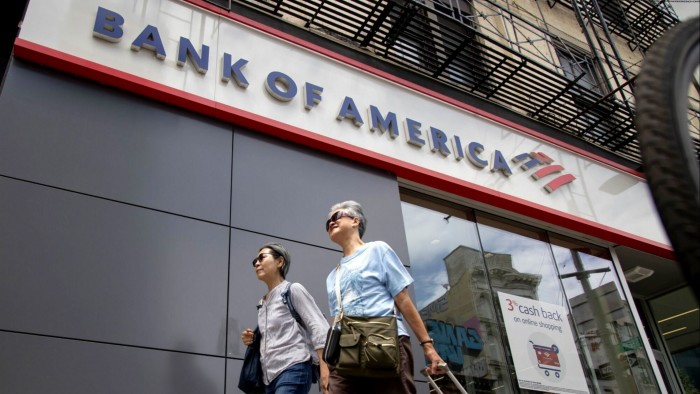Unlock the Editor’s Digest for free
Roula Khalaf, Editor of the FT, selects her favourite stories in this weekly newsletter.
Bank of America is drawing up plans to structure risk transfer deals for smaller lenders, a move that could turbocharge the nascent market at a time of heightened scrutiny.
So-called synthetic risk transfers — or SRTs — have quickly become one of the fastest-growing corners of financial markets for banks and private capital investors.
Banks use SRTs to obtain protection against losses on a pool of loans by selling a slice of the credit risk to investors, paying the investors regular fees for taking it on.
Offloading the risk to investors can trigger regulatory relief that means the bank needs less capital to offset the loans even though it keeps them on its balance sheet, and can boost returns.
BofA’s move has the potential to dramatically increase the pool of banks that can issue SRTs as well as the investors able to buy them.
Lenders are on course to issue a record amount of SRTs this year, according to data from investment firm Chorus Capital, with $16.6bn of SRTs in the first nine months of 2024 — representing protection on a much larger pool of underlying loans.
While European banks have been using SRTs for more than a decade and still dominate the market, large US lenders have flocked to risk transfer trades since the Federal Reserve blessed the transactions last year.
But the increased issuance and interest from investors has raised concerns that the market is developing too rapidly and less sophisticated buyers could end up owning exposure to riskier assets.
The IMF last month cautioned in its twice-yearly global financial stability report that leverage extended by banks to SRT investors — which include pension funds and private capital firms — could create “negative feedback loops” where the risk ostensibly being shifted off banks’ balance sheets stays within the banking system.
One of the brakes on SRT transactions has been the amount of diligence that investors have to do on the pool of loans against which the bank is buying credit protection, and that banks have to do on the potential buyers.
BofA has been exploring ways to structure SRTs for regional banks in the US and smaller players in Europe, then distribute them to multiple investors, according to six people familiar with the matter.
It has been testing interest from other banks and is also in talks with rating agencies on whether a portion of the transaction could be rated investment-grade risk, making it easier to trade.
The efforts could unlock new opportunities for private credit funds, which have been the largest single buyer of SRTs in Europe. BofA’s plans could also reduce the amount of time it takes to complete deals and eventually lead to a more standardised model.
Details of how BofA will structure the deals have yet to be finalised but people familiar with the plans said the bank would help with collateral selection and how to structure the transaction, then run a sales process and deal with the investors.
https://www.ft.com/content/11fb7da7-d529-4e4e-a82f-df6ffbc25565


